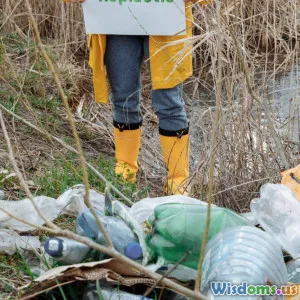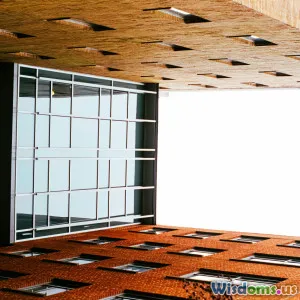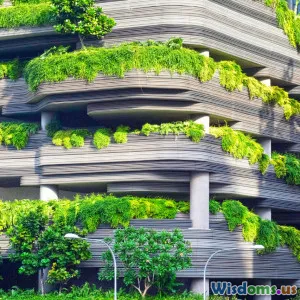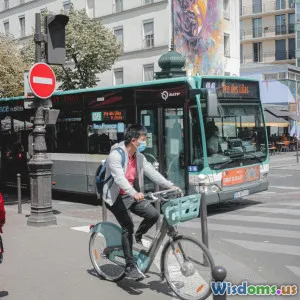
Lessons Learned Building Net Zero Neighborhoods in Harsh Climates
9 min read Explore vital insights from building net zero neighborhoods in extreme climates and how innovation drives sustainable urban living. (0 Reviews)
Lessons Learned Building Net Zero Neighborhoods in Harsh Climates
Introduction
What does it take to design and build net zero neighborhoods where the elements push the limits of construction and energy management? In regions buffeted by extreme cold, blistering heat, or relentless winds, architects, engineers, planners, and communities face monumental challenges striving to create neighborhoods that not only survive but thrive while achieving net zero energy goals.
Today, with climate change accelerating and urban populations swelling, mastering net zero development in harsh climates is pivotal for future-proofing our cities and reducing global carbon footprints. This article explores the nuanced lessons drawn from pioneering projects across the globe where innovative techniques, unwavering commitment, and local wisdom coalesce to create truly sustainable neighborhoods.
Understanding the Stakes: Why Net Zero in Harsh Climates Matters
Impact of Harsh Climates on Energy Use
Harsh climates amplify energy consumption drastically. For instance, Northern Canada’s residential heating demand can be ten times that of milder regions, and Southwest U.S. neighborhoods grapple with relentless air-conditioning loads. Recognizing these geographic forcing functions is critical because energy use in buildings accounts for roughly 40% of global CO2 emissions according to the International Energy Agency (IEA).
The Promise of Net Zero Neighborhoods
Net zero neighborhoods combine energy-efficient building envelopes, renewable energy generation, and smart grid technologies at the community scale. Instead of isolated buildings, the entire neighborhood cooperates to optimize energy use and generation through shared infrastructure and data analytics.
Developing net zero neighborhoods in demanding climates proves feasibility while showcasing scalable strategies for climate mitigation.
Key Design and Technical Lessons
1. Prioritize Ultra-High-Performance Building Envelopes
Harsh weather demands exceptional insulation, airtightness, and durable materials to drastically minimize heating and cooling demand.
Example: The Vitoria-Gasteiz net zero neighborhood in Spain experienced extreme summer heat, leading designers to adopt triple-glazed windows, enhanced shading devices, and reflective roofing materials, which collectively reduced cooling loads by 70%.
An airtight envelope also requires carefully engineered ventilation with heat recovery. The Passive House standard, long tested in cold climates like Scandinavia, remains a benchmark due to its meticulous focus on insulation, window quality, and building orientation.
2. Leverage Renewable Energy Within Local Contexts
Renewables must be tailored to climatic realities. Solar photovoltaic (PV) panels generally dominate, but severe snow loads or dust may reduce efficiency.
Case Study: Nuuk, Greenland—the coldest net zero project underway—combines solar panels optimized for low-angle winter sunlight with wind turbines suited to the region’s persistent Arctic winds. Complementary bioenergy and thermal grids further reduce fossil reliance.
Battery and thermal energy storage are essential to balancing intermittency, especially during prolonged cloudy or calm periods.
3. Incorporate Smart, Resilient Infrastructure and Energy Sharing
Neighborhood-level microgrids and smart meters allow energy flows to be monitored and optimized in real time. Communities can share surplus generation, storing energy seasonally or pivoting loads intelligently via home automation.
In Alberta, Canada, the Drake Landing Solar Community (DLSC) demonstrated solar-thermal energy storage that provides over 90% of winter heating needs for its 52 homes by storing summer heat underground.
4. Consider Passive Strategies with Climate-Adaptive Urban Planning
Street layouts, building spacing, and green spaces are traditional urban tactics modernized for energy efficiency.
In hot deserts, shading via tree-lined corridors and water bodies significantly reduces ambient temperatures. In sub-zero areas, building positioning minimizes wind chill impacts on facades and outdoor gathering spaces.
5. Engage Local Communities Early and Often
Cultural factors influence acceptance and energy habits. Neighborhoods in remote Alaskan villages incorporated indigenous knowledge related to insulation and natural ventilation principles, fostering trust and maximizing occupant comfort.
Community workshops and transparent data sharing have proven critical in reducing resistance and promoting behavioral change.
Challenges and Overcoming Barriers
Cost and Financing Complexities
The upfront capital for high-performance materials, renewables, and infrastructure is a major obstacle.
Learning from the Freiburg-Vauban district in Germany, leveraging public-private partnerships and government subsidies enabled sizable upfront investments with returns realized via lower energy bills, increased property values, and health benefits.
Regulatory and Code Limitations
Many building codes remain inadequate for recognizing neighborhood-scale energy systems or permitting innovative technologies such as shared microgrids. Advocates from projects in Finland’s Arctic Circle emphasize policy reform must keep pace with innovation.
Technical Integration and Maintenance
Complex energy systems require skilled operation and monitoring. Extensive training for local technicians and digital tools with user-friendly interfaces help prevent system degradation over time.
Real-World Insights From Projects in Harsh Climates
Drake Landing Solar Community, Alberta, Canada
Since 2007, this community has been a seminal example combining solar thermal collectors with seasonal storage if energy underground. This system not only achieves near-net zero heating energy but demonstrates the unprecedented reliability of sustainable heating in prolonged cold.
BedZED, United Kingdom
While not in an extreme climate per se, the Beddington Zero Energy Development's lessons in integrating solar power, intentional landscaping, and ventilation controls provide compelling transferable insights.
The Greenhouse Project, Nuuk, Greenland
Working in a remote Arctic capital, this neighborhood incorporates airtight construction alongside diverse renewables, demonstrating that despite logistical challenges, high ambition can succeed in extreme cold.
Inspiring Pathways for Future Developments
As technology advances, net zero neighborhoods in harsh climates will become models for resilient, livable communities worldwide. Integrating advanced materials, IoT-powered energy management, and participatory planning will open extraordinary potential.
Urban planners and policymakers can harness these insights to set ambitious yet achievable targets, creating neighborhoods that don't simply endure harsh weather—they flourish in it.
Conclusion
Building net zero neighborhoods in harsh climates is a powerful testament to human ingenuity, persistence, and collaborative spirit confronting climate challenges. From ultra-efficient construction and tailored renewable integration to smart infrastructure and local engagement, a multidimensional approach emerges as indispensable. These lessons deepen our understanding of sustainable urban design far beyond temperate zones, offering a blueprint not only for reducing emissions but for forging communities intimately in tune with their environment—undeterred by extremes. The commitment to transform harsh climates into net zero havens signals the future of resilience and urban sustainability.
Inspiringly, the knowledge gained from these cutting-edge projects invites architects, planners, and communities worldwide to rethink boundaries, adopt innovations, and act decisively to meet our climate goals—wherever they live.
Rate the Post
User Reviews
Popular Posts




















